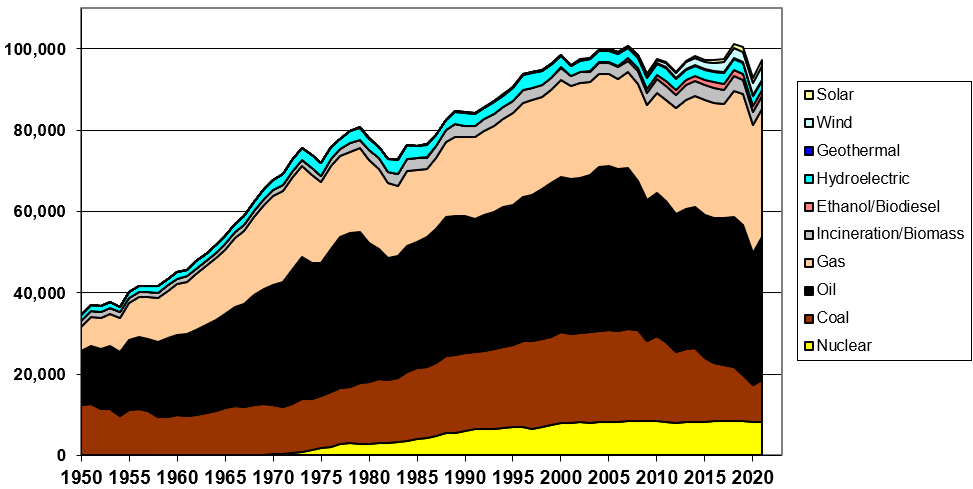Want to know where U.S. energy currently comes from? Check out this new series of charts we just updated, based on data through August 2016, with projections for all of 2016. Find all of them here: www.energyjustice.net/energysources
Here are some of the highlights:
- Overall energy demand peaked in 2007. Energy demand is broken down into electricity, transportation and heating sectors. Electricity and transportation sector energy use also both peaked in 2007. Heating sector peaked in 1970.
- Oil, gas, then coal are still our top three energy sources, followed by nuclear in 4th place.
- Coal use is falling dramatically, while gas use is rising dramatically. In 2012, gas overtook nuclear as the second largest electricity source after coal. Gas will soon overtake coal as well.
- As we predicted, the largest sector of natural gas use is now for electricity (overtaking the industrial heating sector), as we're in the middle of a second wave of construction of gas-fired power plants, with at least 300-some proposed in recent years, many of which are now online. We still import more LNG than we export, so the gas market is largely feeding electric power plants, not exports.
- Despite several nuclear reactors closing in recent years, nuclear energy use is steady and slightly increasing (existing plants are being run harder).
- Wind and solar are growing fast, but are still small.
- Bioenergy is still the largest form of "renewable" energy, even though it's dirty, and worse for the climate than coal. Thankfully, it's stagnating since 2014 and stopped its rapid increase.
- Heating fuel use is down a lot since 2014, probably due to global warming and record high temperatures, since it's mostly residential and commercial heating. Industrial heating (the largest part of it) hasn't fallen much in that time.
- Biomass incineration peaked in 2014 and is now falling, thanks in large part to our activist network fighting off so many proposed facilities. Wood for home heating is falling fast, which is also good.
See more at www.energyjustice.net/energysources

